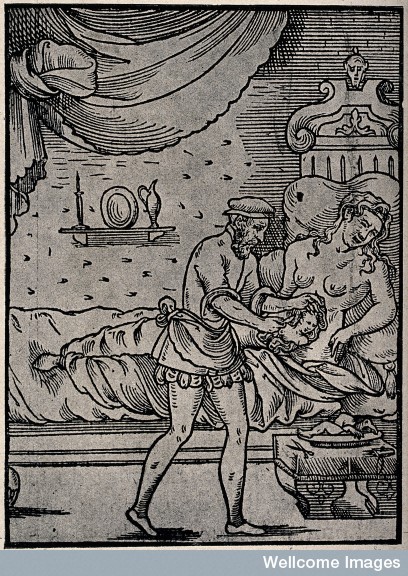In 1720, Dr. Den. Hickie complained to Sloane about an ongoing dispute with a neighbour:
the Lord of the Manor who is intent upon me as a stranger to do me prejudice & particularly in destroying a few pigeons that my wife has always kept without molestation since first shee bought her estate in this Countrey.
The country in this case referred to France, not just the countryside. Dr and Mrs Hickie had moved to Meulan sur Seine from London. It was “the profes that you have given me of your friendship whilest I resided & practiced in London”, Hickie wrote, that “encourages me to take the liberty of importuning you at present”. Hickie reminded Sloane that the friendship had not been one way, as he had been sending his observations to the Royal Society on Sloane’s directions.
Sloane might not seem the obvious choice to assist with a neighbourly dispute in France, until Hickie specified who is neighbour was: one of the Abbé Bignon’s brothers. By 1720, Sloane and the Abbé had been regular correspondents for over twenty-five years (which Ann-Marie Hansen discusses in another post). Although Hickie had met the Abbé in person and been received upon Sloane’s “acc[oun]t wth a great deal of civility & friendship”, he clearly was not in a position to ask the Abbé directly for assistance. But he hoped that Sloane would intercede with the Abbé on his behalf:
a word speakeing from the Abbé at his Brother is enough to free me from the disturbance that this man designes to give me therefore I hope that you’ld contribute to protect me by your recommendation.
This is a letter that highlights the complicated routes that patronage might take. One could not just approach someone of the Abbé’s standing on a limited acquaintance, especially in France where the rules of patronage were even more stringent than in England. An intermediary was crucial. And who better than the one who had introduced Hickie to the Abbé in the first place?
But… it’s really the dispute over pigeons in this letter that captures my interest.

A rather fine pigeon. From John Moore, A Treatise on Domestic Pigeons (1765). Credit: Wellcome Library, London.
Pigeons were not just valuable livestock, but one that owners (or “fanciers” as they even called themselves in the 1700s) seemed to hold in great affection. The most common use of pigeons was for food, which provided a steady supply of meat year round. In his Columbarium: or, the pigeon-house (London, 1735),
John Moore argued that pigeon dung was particularly important for fertilizing crops, making medicines, tanning leather and producing salt-petre. The dung was so good that it “challengeth the Priority, not only of the Dung of Fowls, but of all other Creatures whatsoever, on the accont of its usefulness in human Life.” Moore’s chapter on treating pigeon distempers suggests the lengths that fanciers might go to care for their pigeons: special diets, imported ingredients (such as tobacco) and attentive nursing. The attack on Mrs Hickie’s pigeons must have been upsetting for the Hickies on several levels.
Alhough Hickie suggested that Bignon was attacking the pigeons because the Hickies were not local (a natural fear for anyone living in a foreign land), the reasons are likely far more complicated. Whereas there were no regulations on who might own pigeons in eighteenth-century England, French law was very clear–only lords of the manor had the right to keep or kill pigeons. This feudal right was considered to be such a fundamental mark of inequality that it was revoked in the second article of the 4 August Decrees of 1789, which were passed by the National Assembly to settle peasant unrest in the countryside during the French Revolution.
It’s unclear which brother Hickie meant, but all three brothers were firmly entrenched in the aristocracy: Louis was the Major General of the King’s Armies, Jérôme III was the Intendant of Amiens and Armand Roland was the Intendant of Paris. Such men would not have looked kindly upon mere commoners, however well-to-do, keeping pigeons.
Hickie may have been astute enough to spot the need for an intermediary in the dispute, but he had made a classic ex-pat mistake of fundamentally missing an important cultural difference. What would have been a simple matter of bad neighbourliness in England was at the heart of aristocratic privilege in France.













